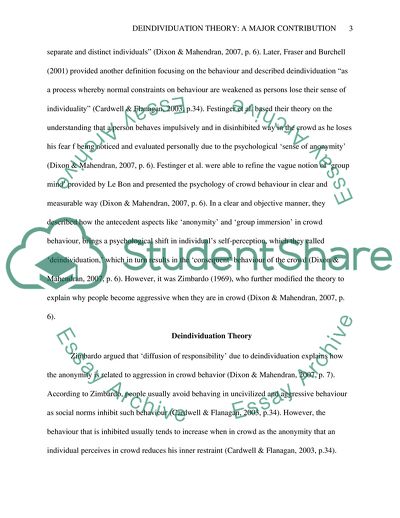Cite this document
(How might deindividuation theory explain the looting behaviour that Essay - 1, n.d.)
How might deindividuation theory explain the looting behaviour that Essay - 1. https://studentshare.org/psychology/1793213-how-might-deindividuation-theory-explain-the-looting-behaviour-that-sometimes-accompanies-crowd-riots-what-are-the-strengths-and-limitations-of-this-kind-of-approach-to-understanding-collective-behaviour
How might deindividuation theory explain the looting behaviour that Essay - 1. https://studentshare.org/psychology/1793213-how-might-deindividuation-theory-explain-the-looting-behaviour-that-sometimes-accompanies-crowd-riots-what-are-the-strengths-and-limitations-of-this-kind-of-approach-to-understanding-collective-behaviour
(How Might Deindividuation Theory Explain the Looting Behaviour That Essay - 1)
How Might Deindividuation Theory Explain the Looting Behaviour That Essay - 1. https://studentshare.org/psychology/1793213-how-might-deindividuation-theory-explain-the-looting-behaviour-that-sometimes-accompanies-crowd-riots-what-are-the-strengths-and-limitations-of-this-kind-of-approach-to-understanding-collective-behaviour.
How Might Deindividuation Theory Explain the Looting Behaviour That Essay - 1. https://studentshare.org/psychology/1793213-how-might-deindividuation-theory-explain-the-looting-behaviour-that-sometimes-accompanies-crowd-riots-what-are-the-strengths-and-limitations-of-this-kind-of-approach-to-understanding-collective-behaviour.
“How Might Deindividuation Theory Explain the Looting Behaviour That Essay - 1”. https://studentshare.org/psychology/1793213-how-might-deindividuation-theory-explain-the-looting-behaviour-that-sometimes-accompanies-crowd-riots-what-are-the-strengths-and-limitations-of-this-kind-of-approach-to-understanding-collective-behaviour.


